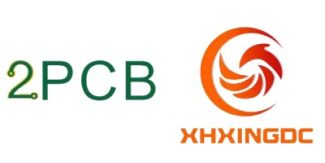As a qualified PCB design engineer, you need to master the knowledge of design software, electronic components, key signals, boards, SI, PI, EMC, etc. Today, 2PCB will briefly introduce the selection of PCB boards.
How to choose PCB boards?
The selection of PCB boards must strike a balance between meeting design requirements and mass production and cost. Design requirements include electrical and mechanical parts. Usually, this material issue is more important when designing very high-speed PCB boards (frequencies greater than GHz). For example, the dielectric loss of the commonly used FR-4 material at a frequency of several GHz will have a great impact on signal attenuation and may not be suitable. In terms of electrical, pay attention to whether the dielectric constant and dielectric loss are suitable for the designed frequency.
Specifically, the following factors are mainly considered when choosing a suitable PCB board:
1. Manufacturability
For example, how is the performance of multiple laminations, temperature performance, etc., CAF resistance/heat resistance and mechanical toughness (adhesion) (good reliability), and fire rating.
2. Various performances matching the product (electrical, performance stability, etc.)
Low loss, stable Dk/Df parameters, low dispersion, small coefficient of variation with frequency and environment, small tolerance of material thickness and glue content (good impedance control), if the routing is long, consider low roughness copper foil. Another point is that simulation is required in the early stage of high-speed circuit design, and the simulation results are the reference standard for design.
3. Timely availability of materials
Many high-frequency board procurement cycles are very long, even 2-3 months; except for the conventional high-frequency board RO4350, which is in stock, many high-frequency boards need to be provided by customers. Therefore, high-frequency boards need to be communicated with manufacturers in advance and materials should be prepared as soon as possible.
4. Cost factors
It depends on the price sensitivity of the product, whether it is a consumer product, or a communication, medical, industrial, or military application.
5. Applicability of laws and regulations, etc.
It should be integrated with environmental protection laws and regulations of different countries to meet RoHS and halogen-free requirements.
Appendix: Commonly used PCB boards
FR-4
A code for a flame-resistant material grade, which means that the resin material must be able to extinguish itself after burning. It is not a material name, but a material grade. Therefore, there are many types of FR-4 grade materials used in general circuit boards, but most of them are composite materials made of so-called tera-function epoxy resin plus fillers and glass fibers.
Resin
A thermosetting material that can undergo polymer polymerization. Epoxy resin is commonly used in the PCB industry. Functional characteristics:
A. Electrical insulation
B. Can be used as an adhesive between copper foil and reinforcement (glass fiber cloth)
C. Electrical resistance, heat resistance, chemical resistance, and water resistance
Glass fiber cloth
An inorganic substance is cooled after high-temperature fusion to become a non-crystalline hard substance, and then a reinforcement material formed by interweaving warp and weft yarns.
Common E-glass fiber cloth specifications are: 106, 1080, 3313, 2116, 7628.
Aluminum substrate
The base material is of course aluminum, which is composed of copper skin, insulation layer and aluminum sheet. It is now commonly used in the LED lighting industry because of its good heat dissipation performance.
